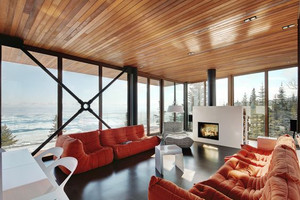
Stuv 21-125 Clad Double Face Freestanding Fireplace DF2
STUV Contemporary Wood Stoves and Fireplaces

STUV Contemporary Wood Stoves and Fireplaces

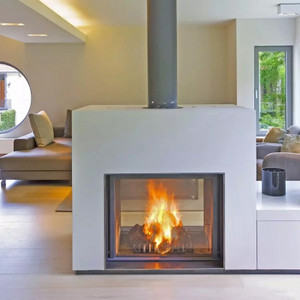

Regency Fireplace Products-Gas Inserts, Wood Stoves & More

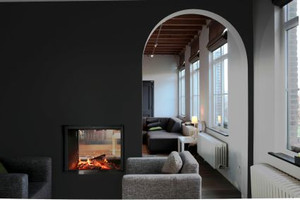
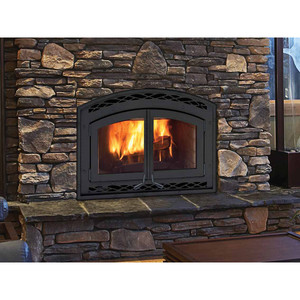


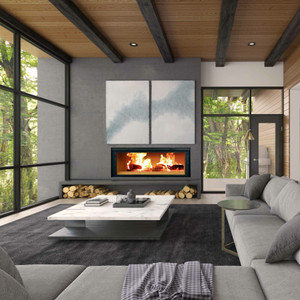










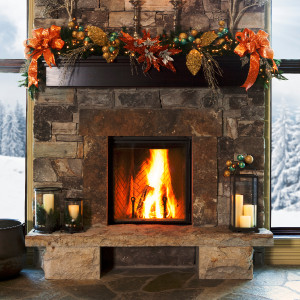
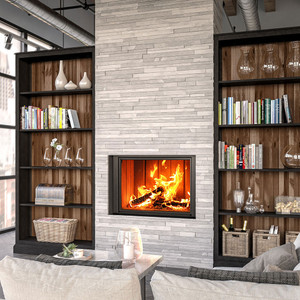

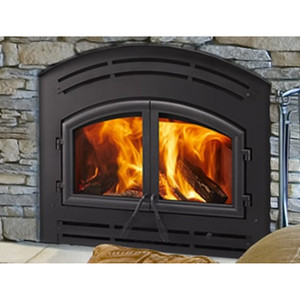
Zero clearance wood burning fireplaces offer a solution for homeowners seeking the warmth and ambiance of a real wood fire without the extensive space requirements of traditional masonry fireplaces. These fireplaces are designed to be installed almost directly against combustible materials like wood framing, without the need for a buffer zone. This feature simplifies installation and opens up a multitude of design possibilities, allowing for wood burning fireplaces to be included even in small living spaces or rooms where a traditional fireplace might not fit.
The appeal of wood burning zero clearance fireplaces extends beyond their space-saving attributes. Modern units are engineered for high efficiency, capturing more heat from the wood fuel and directing it into the living space. This efficiency not only maximizes the heat output but also contributes to cleaner burning, reducing emissions and helping the environment. Additionally, contemporary designs range from classic to modern aesthetics, offering options for double-sided fireplaces, inserts for converting gas fireplaces to wood burning, and various accessories such as wood fireplace blowers to enhance performance and comfort.
For those considering installation, choosing the right wood burning fireplace is a project that combines aesthetic preferences with practical considerations such as size, heating capacity, and local building codes. Decisions about the type of fireplace will also influence the overall cost and complexity of the installation process. Whether it's a large living area or a cozy retreat, there's a wood burning fireplace option available to suit virtually any indoor setting.
Wood burning fireplaces provide warmth, comfort, and a traditional ambiance to a home. They are known for their ability to generate efficient heat and add a natural aesthetic.
Wood burning fireplaces have been a fundamental part of home heating for centuries. They rely on wood as fuel, which when ignited, burns and releases heat. Airflow is crucial in these fireplaces as it feeds oxygen to the fire, ensuring complete combustion and minimizing smoke.
Zero clearance wood fireplaces are designed to be installed in close proximity to combustible materials without requiring a masonry hearth or foundation. They are suitable for both new construction and adding to existing structures because their minimal space requirements.
High efficiency wood burning fireplaces are engineered to burn wood more completely, translating to more heat with less fuel. They reduce waste and emissions, making them an eco-friendly option.
Modern wood burning fireplace designs blend functionality with contemporary aesthetics. They are available in a variety of styles to complement modern living spaces, including double-sided wood burning fireplaces which provide a central feature in a room.
Wood burning fireplaces add warmth and ambiance to a home. They come in various designs tailored to fit different functional and aesthetic needs.
Small wood burning fireplaces are ideal for cozy spaces or as supplementary heat sources. Their compact design makes them an excellent fit for smaller rooms or apartments, providing the same warmth and charm as their larger counterparts without occupying too much space.
Indoor wood fireplaces are the classic option for residential heating and have been modernized to suit contemporary interiors. These can range from traditional masonry to high efficiency wood burning fireplaces that maximize heat output while minimizing wood consumption and emissions.
Double sided wood fireplaces serve as a focal point for multiple rooms simultaneously. With openings on two sides, these fireplaces offer an efficient way to distribute heat evenly and provide an impressive visual element connecting two spaces.
Prefab wood burning fireplaces, or zero clearance fireplaces, are pre-manufactured to allow for immediate installation close to combustible materials. These are a convenient option as they are easier to install than traditional fireplaces and come in a variety of styles, including modern wood burning fireplace designs that suit many contemporary homes.
When installing and maintaining a wood burning fireplace, it's important to ensure proper construction and consistent upkeep for safety and efficiency.
Installing a wood burning fireplace requires careful planning and adherence to local building codes. Typically, zero clearance wood fireplaces are easier to install than traditional masonry units due to their pre-fabricated nature. These units can be installed close to combustible materials, but it's essential to follow the manufacturer's guidelines for ventilation and clearance. Professional installation is recommended to ensure a safe and compliant setup.
A wood fireplace blower is designed to improve the efficiency of a fireplace by circulating heated air throughout the room. To use a blower effectively, one should ensure it is compatible with the fireplace model and properly installed. Regular cleaning of the blower's intake and exhaust areas will prevent blockages and maintain optimal airflow.
Maintenance is crucial for any wood burning fireplace to operate safely and efficiently. Routine cleaning of ash and soot buildup, as well as annual inspections of the chimney and flue system, are necessary to prevent fire hazards and ensure adequate ventilation. Replace gaskets and seals as needed to keep the fireplace airtight and efficient. Always use seasoned wood to reduce smoke and creosote accumulation.
When considering the installation or use of a wood burning fireplace, particularly zero clearance models, homeowners must be aware of specific safety, efficiency, and design factors, as well as indoor air quality concerns.
Zero clearance wood burning fireplaces require adherence to the manufacturer's instructions and local building codes. It is crucial to have a qualified professional install the fireplace to ensure proper clearances are maintained from combustible materials, and that the venting system is installed correctly.
High efficiency wood burning fireplaces are designed to burn wood more completely and cleanly, producing more heat with less wood and reducing emissions. They often feature advanced technologies like secondary combustion and better insulation, helping to lower heating costs and reduce environmental impact.
When selecting a modern wood burning fireplace design, consider the space's aesthetics, the fireplace's size, and how it integrates with the home's heating needs. Contemporary designs often incorporate sleek lines and materials that can serve as a focal point for a room.
Maintaining indoor air quality with an indoor wood burning fireplace involves using properly seasoned wood, ensuring adequate ventilation, and having regular chimney inspections and cleanings. High-efficiency fireplaces and adding a wood fireplace blower can also help circulate cleaner, warmer air throughout the living space.